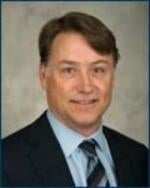It has long been held that inventions reflecting the “hand of man” may be patented. It has also long been established that products of nature, abstract principles, or natural phenomena may not be patented. Since the early 1980s, the United States Patent and Trademark Office (USPTO) has issued patents on isolated DNA sequences, but the issue of whether DNA sequence claims constituted patentable subject matter under 35 U.S.C. § 101 had not been tested fully in litigation. The U.S. Court of Appeals for the Federal Circuit has now concluded that while isolated DNA sequences may constitute patentable subject matter, a method that compares gene sequences does not. Association for Molecular Pathology v. U. S. Patent and Trademark Office, Case No. 10-1406 (Fed. Cir., July 29, 2011) (Lourie, J.) (Moore, J., concurring-in-part) (Bryson, J., concurring-in-part and dissenting-in-part).
In May 2009 various individuals, medical researchers and organizations represented by the American Civil Liberties Union filed suit challenging gene patents held by Myriad Genetics. The patent claims at issue were directed to isolated DNA sequences, methods of detecting BRCA mutations and methods of using cells transformed with mutant BRCA to screen for potential drugs. In the ensuing litigation, the U.S. District Court for the Southern District of New York struck down Myriad's patent claims, finding that they constituted unpatentable subject matter under § 101. Specifically, the district court concluded that the claims directed to isolated DNA encoding the BRCA1 or BRCA2 proteins (or fragments thereof) were directed to unpatentable subject matter because they claimed a product of nature. In doing so, the district court observed that products isolated from nature must possess “markedly different characteristics” from the product in nature to constitute patentable subject matter. Further, the district court concluded that DNA is “distinct in its essential characteristics from any other chemical found in nature [and its] existence in an ‘isolated’ form alters neither this fundamental quality of DNA as it exists in the body nor the information it encodes.” The district court also found Myriad’s method claims to be unpatentable abstract mental processes of comparing or analyzing two gene sequences and concluded that the claimed steps of analyzing and comparing failed to recite the specific transformative steps that are a hallmark of patentable subject matter. Finally, the district court found Myriad’s cell-screening claims, which are directed to a method of identifying compounds useful in treating BRC-associated cancer by screening compounds against cells transformed with BRCA, also failed the transformation test because the transformative steps were mere data-gathering. Myriad appealed.
The Federal Circuit reversed-in-part and affirmed-in-part the district court ruling. Writing for the majority, Judge Lourie explained that, “[w]e reverse the district court’s decision that Myriad’s composition claims to ‘isolated’ DNA molecules cover patent-ineligible products of nature under §101 since the molecules as claimed do not exist in nature.” Based on a “markedly different characteristics” standard articulated in Diamond v. Chakrabarty, the Court concluded that isolated DNA has “markedly different chemical characteristics” compared to corresponding native DNA.
In this case, the claimed isolated DNA molecules do not exist in nature within a physical mixture to be purified. They have to be chemically cleaved from their chemical combination with other genetic materials. In other words, in nature, an isolated DNA molecule is not a purified form of a natural material, but a distinct chemical entity. In fact, some forms of isolated DNA require no purification at all, because DNA can be chemically synthesized directly as isolated molecules.
As to the method claims, the Federal Circuit noted that in accordance with the Supreme Court’s Bilskidecision, whether a claim includes transformation still remains an important and useful clue to patentability of method claims, and explained that “Myriad’s method claims directed to ‘comparing’ or ‘analyzing’ DNA sequences are patent ineligible; such claims include no transformative steps and cover only patent-ineligible abstract, mental steps.” The claims do not specify any action prior to the step of “comparing” or “analyzing” two sequences; the claims just recite the one step of “comparing” or “analyzing.” Moreover, those terms’ plain meaning does not include Myriad’s proposed sample-processing steps; neither comparing nor analyzing means or implies “extracting” or “sequencing” DNA or otherwise “processing” a human sample.
However, method claims directed to screening compounds with cells transformed with mutant BRCA were found to be patent eligible. Here, the Court found the necessary “transformation” in the claim’s steps of “growing a transformed eukaryotic host cell” and “determining the rate of growth of said host cell.”
Judge Moore filed a concurring opinion, distinguishing between sequence claims directed to isolated cDNA and isolated sequences that are identical to naturally occurring sequences, which she through would present a “much closer call.” Judge Bryson dissented in part as to shorter or longer sequences that were isolated from nature, stating that such sequences would not constitute patentable subject matter.
Practice Note: Given the outcome, the parties are likely to petition the full Federal Circuit for en bancreview and may ultimately petition the Supreme Court for review of this important decision.




 />i
/>i
